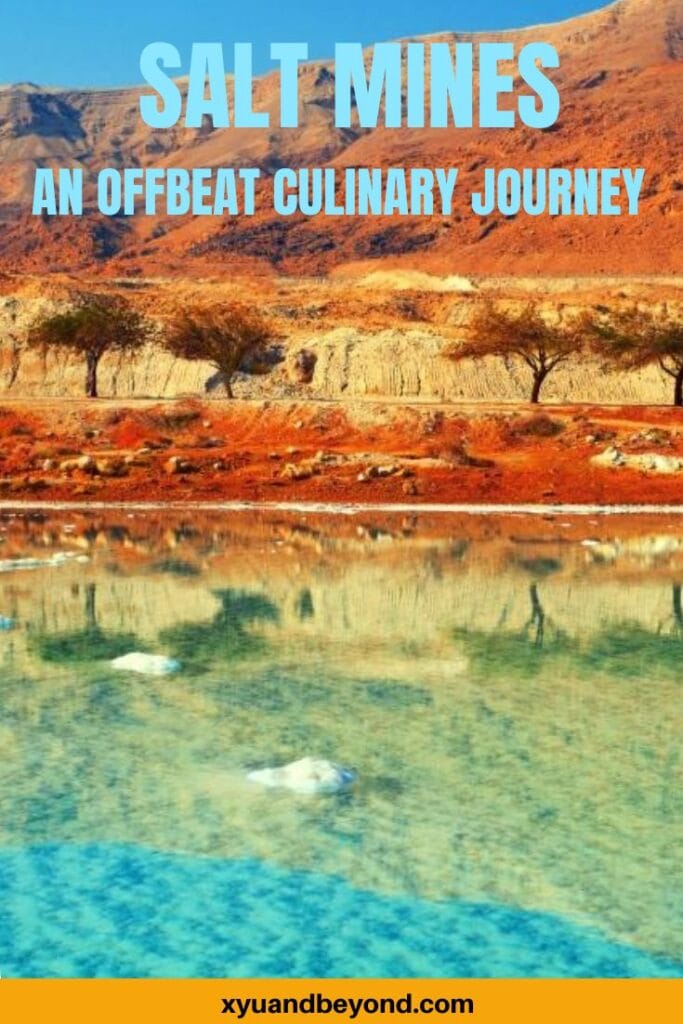Salt Mines around the world – an offbeat culinary journey
An immeasurably important part of human society dates back as far as 2700BC. Salt was used even before the beginning of recorded history. The earliest known paper on salt was written in China and devoted to describing more than 40 kinds of salt including salt extractions similar to processes used today.
The word salary was derived from the word salt and even salad comes from the word. Salt is the subject of many legends, fairy tales and folktales. It has served as currency and offerings of bread and salt are offered to visitors in many cultures.
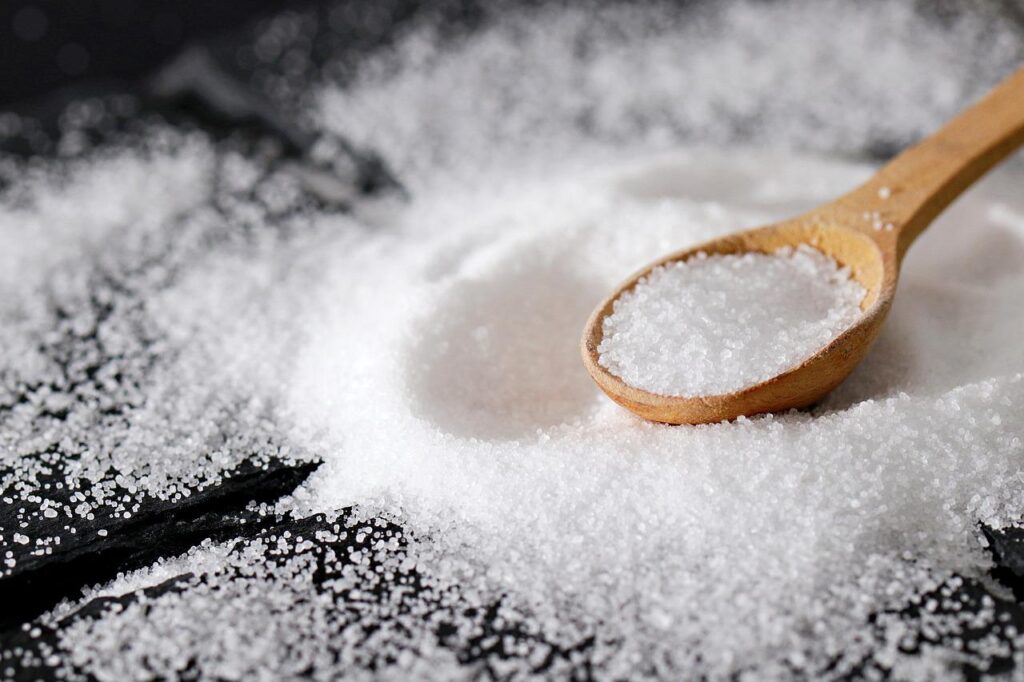
Expressions like “not worth their salt” comes from the trading of slaves in Ancient Greece. Roman Soldiers were given a “salarium Argentum,” from which the word “salary” is derived. Salt has also been of great significance in religious practices. Within the Bible, there are more than 30 references to salt including that of “salt of the earth”. In fact, salvation is derived from the root word salt.
Salt doesn’t just enhance food the sodium ions in salt help maintain the fluid in blood cells and assist the small intestine to absorb nutrients. Humans have always had to look to the environment around them to find salt and early hunter-gathers followed animals to salt deposits.

The Egyptians were the first to realize the preservation possibilities of salt. They learnt that salt will draw out the bacteria causing moisture in the food and so used salt to assist in the curing of mummies – it worked for food why not bodies?
These days we all appreciate Parma ham, gravlax, bresaola, Spanish Jamon and baccalau (salt cod) which are all the result of salt curing.

Did you ever notice that in DaVinci’s famous painting “The Last Supper” Judas has spilt a bowl of salt which was a potent of evil? Remember the old folk tales that if you spill salt you must throw a pinch over your left shoulder to ward off evil?

In Buddhism salt is used to ward off evil spirits and in Shintoism salt is used as a purifier. Sumo wrestlers throw a handful of salt into the ring to drive off evil spirits. In the pueblos of Southwest America, the Salt Mother is revered. The Dalai Lama was buried sitting upright on a bed of salt. In India a gift of salt is a symbol of good luck; and in fairytales of witches, magic circles are cast which help contain the good energy and form a sacred space of protection.
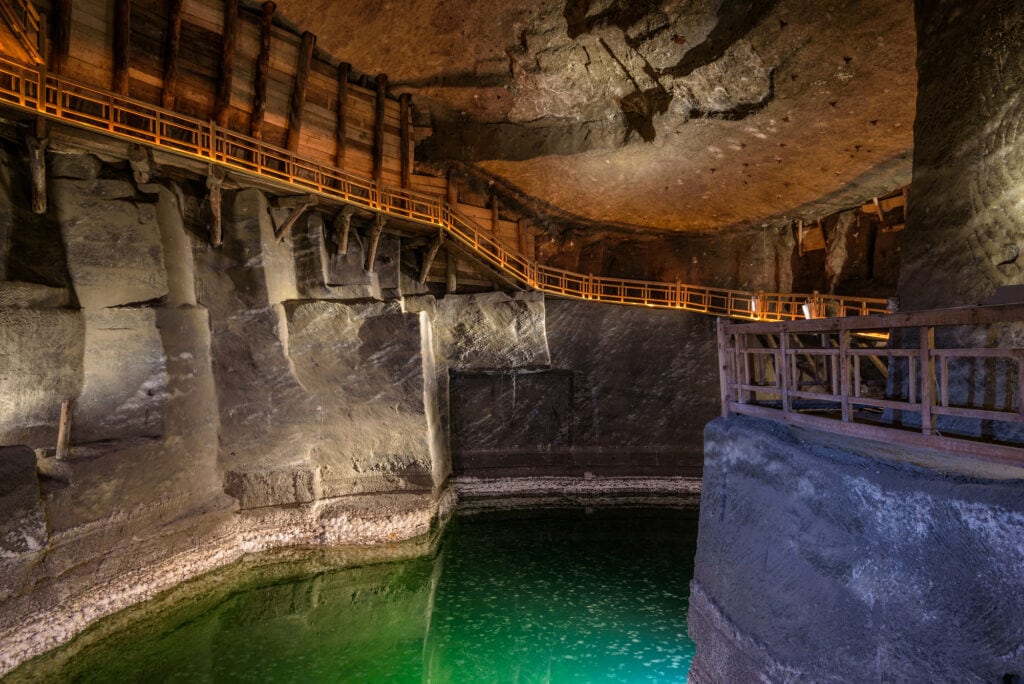
The Shangxi province of China has a salt lake, Yuncheng, and it’s estimated that wars were being fought over control of its salt reserves as early as 6000 B.C. Salt was gathered from the lake during the dry season when the water evaporated and flats of salt were exposed. The Egyptians got their salt from Nile marshes, while early British towns tended to form around salt springs. In fact, the “wich” suffix in English place names like Middlewich and Norwich is associated with areas where salt mining took place.
Wild salt is harvested from nature with no mechanical interference. Foragers have harvested wild salt for centuries, but the most traditional way of salt gathering has been the evaporation of salt from the sea. Salt has also been mined and in many places, throughout the world, you can visit these natural salt mines or seas.
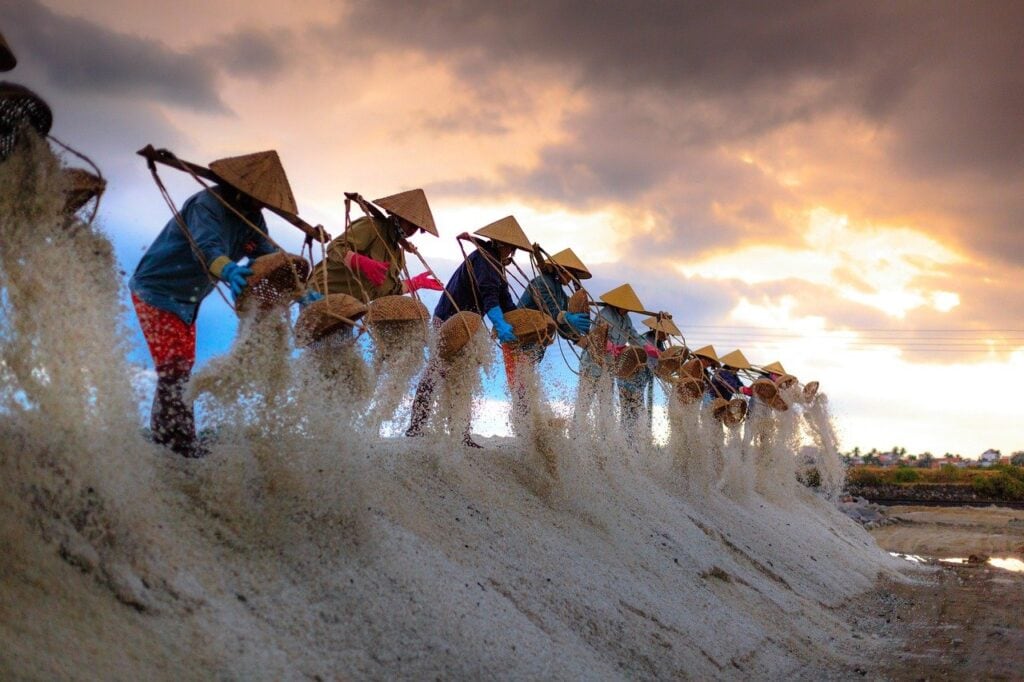
These days food tourism is starting to trend all over the world. Many people add food sites to their bucket lists and are keen to explore areas that would be considered food tourism such as salt flats and salt mines. In many areas of the world, local populations have turned things that are important in their everyday lives into tourist sites. These are just a few of the world’s wild salt areas where you can visit and explore the treasure of salt.
- Salt Mines around the world – an offbeat culinary journey
- 17 Salt Mines around the world to visit
- Wieliczka Salt Mine, Poland
- Salineras de Maras, Peru
- Salt Mines Dominican Republic
- Piran Salt Pans, Slovenia
- The Saline Royale at Arc-et-Senans, France
- Ria de Aveiro, Portugal
- Guérande salt, France
- Zipaquirá, Colombia
- Tainan Salt Fields, Taiwan
- Las Coloradas – Mexico
- Rann of Kutich Salt Desert India
- Salt Mining Ukraine Kinburn National Park
- Salar de Uyuni, Bolivia
- Salt fields in Kampot, Cambodia
- The Dead Sea, Israel
- San Pedro, Atacama Peru
- Las Salinas de Tenefe, Gran Canaria
- 17 Salt Mines around the world to visit
Xyuandbeyond is reader-supported. When you buy through links on our site, we may earn an affiliate commission. You can read my privacy policy here.
17 Salt Mines around the world to visit
Wieliczka Salt Mine, Poland
Anyone visiting Krakow, Poland should plan a Wieliczka Salt Mine tour. The incredible Wieliczka Salt Mine is a 13th-century working mine located about 30 minutes southeast of Krakow. There are countless tours to the destination and they all take visitors deep underground to a depth of 327 m. You can travel to the underground mine shafts by a series of stairs or by elevator. Once underground, you’ll find over 245 km of mines that are full of history, legends, and impressive art. In the 2,000 chambers you can easily get lost, so only guided tours are available for those visiting the mine.

There are two main routes that you can take when touring the site: the Tourist Route and the Miners’ Route. Both are about three hours to tour and provide a completely different experience. The Tourist route includes highlights like the underground salt lakes in Wieliczka, the salt cathedral, and various chambers that house salt sculptures from throughout history. If you opt for a guided tour via the Miners’ Route, you will have a more authentic experience. For this tour, you’ll suit up in coveralls and even test the chambers for methane pockets. It really provides visitors with an understanding of life in the mines.
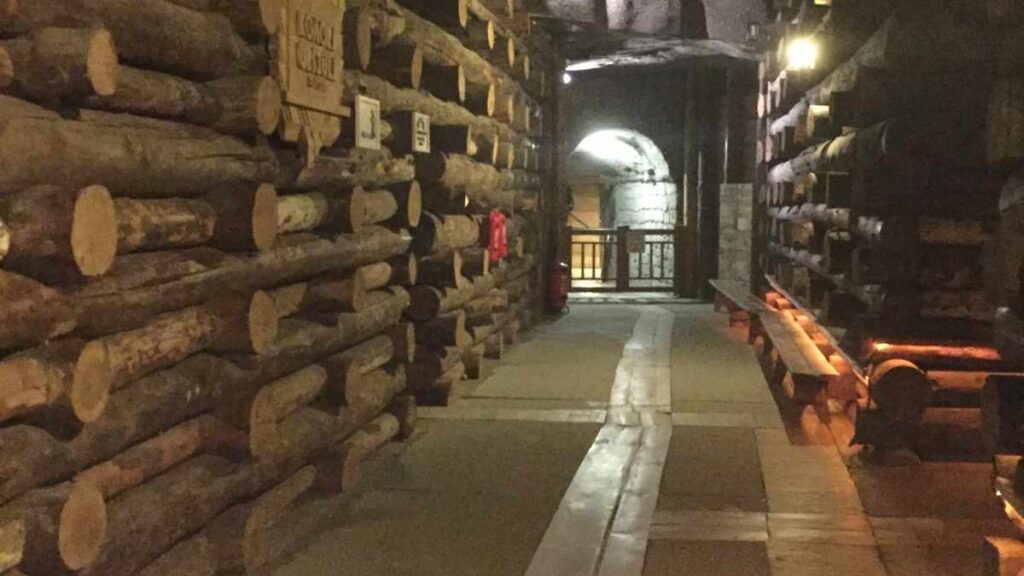
However you choose to visit this UNESCO site, the experience is truly unique and shouldn’t be missed. Contributed by Derek and Mike from Robe Trotting.
The absolute best things to eat in Krakow Poland
Salineras de Maras, Peru
The Maras Salt mines, Salineras de Maras, are located an hour north of Cusco, Peru, a beautiful 40 km drive through the winding roadways in the Andes terrain in the Sacred Valley of the Incas in South America. A taxi is the quickest method to get to the salt mines from Cusco and will cost approximately $10 USD. Alternatively, a community van, called a collectivo, is available, but that is more complicated and may require a little bit of Spanish communication to the driver.
It is interesting to see these salt mines in action. The locals still use the man-made pools to harvest the salt for their community, continuing a tradition that has been going on for over 500 years. The salt is collected by the local family that owns each of the 6,000 salt pan areas and sold at shops in the local towns. To harvest the salt, the natural spring water supply is diverted or turned off, which leaves the crystallized salt residue from the ancient lakes of the area.

They have since closed the narrow pathways that lead throughout and among the mines, so visitors are only able to view them from the observation platform and the mountain overlooks above. They are expansive and amazing. Plan at least a half an hour to visit the Maras Salt Mines Observation Platform on your trip through Peru, but make sure you take plenty of photos from above this beautiful, salty destination. Michelle Moyer from Moyer Memoirs
Salt Mines Dominican Republic
While the Dominican Republic is a salty destination by itself with all the ocean around, there are two places you should visit if interested in salt. Even though there are several salt mines in the country, there are two which are particularly recommendable, especially If you are doing a road-trip in the Dominican Republic.

The first one is the salt mine close to Baní, where salt is extracted from salt ponds like 100 years ago. The hard-working men put the salt into rickety wagons. Those are later pushed manually to the big hill of salt, which is impressive to see, same as the pink salt lakes, which are accounting for beautiful photos. The salt mines of Baní can be best visited in combination with the “Dunes of Baní” just 5 minutes away, the only desert in the Caribbean. You can see the salt mines right from the road, so there is no entrance fee. You can plan around 15-30 minutes for a visit.
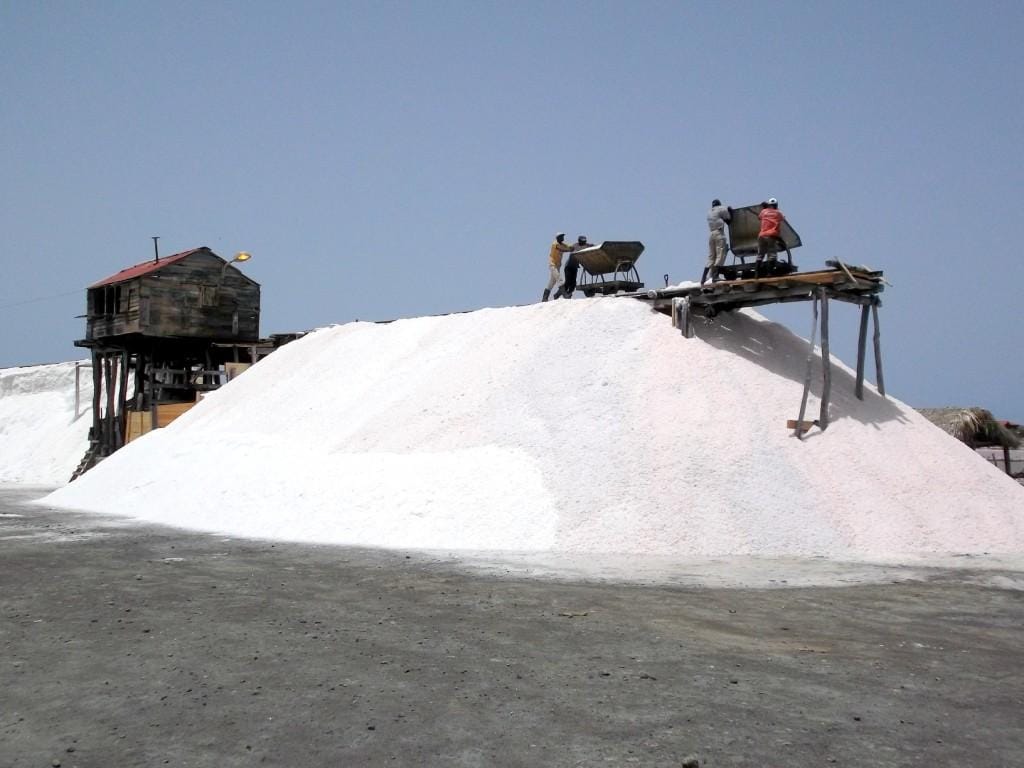
The second salt mine easily accessible is located in Monte Cristi, a completely different region in the Dominican Republic. Here you can see and learn interesting facts about salt production, as they have an interpretation centre and a guided tour. The entrance fee is around 2-3 USD and it takes you around an hour to get around. While the way of extracting salt in Monte Cristi is similar to how they do it in Baní, it is not as picturesque as the pink salt ponds. When heading up to Monte Cristi, you can combine the trip with a visit to the scenic coastal mountain of El Morro, which is just around 4 kilometres away. From Chris at Punta Cana Travel Blog.
Piran Salt Pans, Slovenia
On a small coast in Slovenia (45 kilometres) near the Adriatic sea, you will find the Piran Salt Pans. This is within the Sečovlje Salina Nature Park which covers about 750 hectares along the Slovene-Croatian border. In the Lera part of the park salt is produced with 700 years old natural methods of seawater condensation and crystallization in evaporation basins, manual work, and equipment from ancestors.
The main purpose of this operation is the conservation of cultural heritage first mentioned in the year 804, but still, at the park, they produce enough to sell. The special item here is Salt Flower (FLEUR DE SEL), salt of extra quality collected from the top. They even have chocolate with this salt. In the second part of the park, Fontanigge, one can find halophytes (salt-loving plants) and many birds.
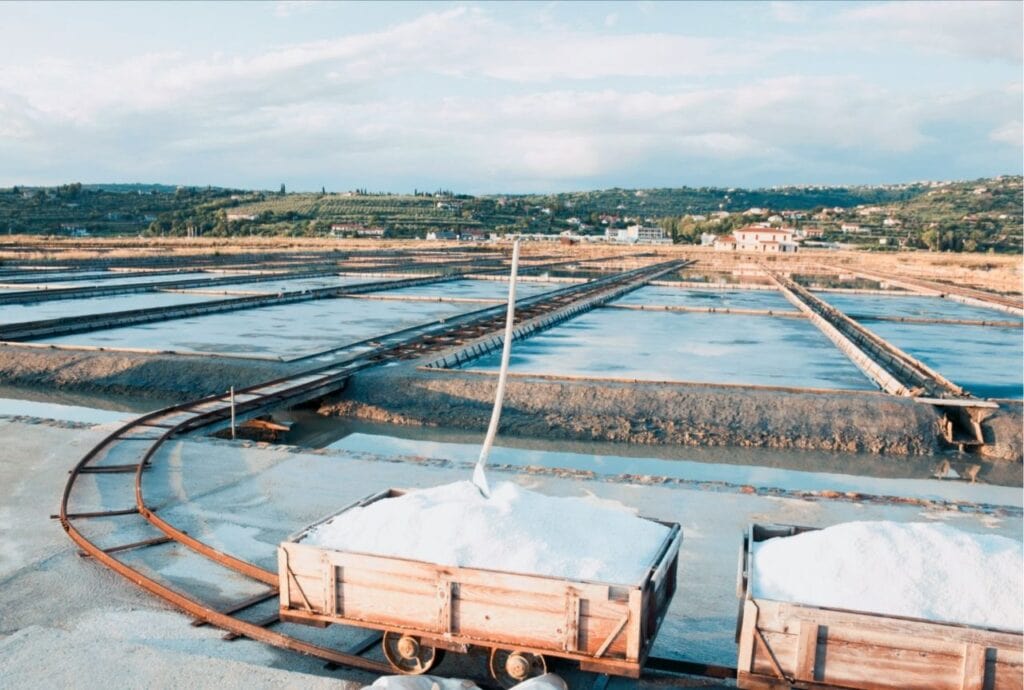
In the north part of the park, there is a Lepa Vida spa that offers thalassotherapy with salt-pan mud and brine in the calm environment of the park. The inhabitants of Piran used to start the salt-making season with a departure of workers to the salt pans on the day of St. George, April 23rd. On that day in this medieval town influenced by the Venetian Republic, there is a festival. So this would be a good time to visit. By Džangir Kolar of Drjamtravels.
The Saline Royale at Arc-et-Senans, France
The Saline Royale in France is an impressive sight for several reasons: this large 18th-century compound was set up for the purpose of producing salt on an industrial scale. It was designed by the royal architect Claude Nicolas Ledoux (1736-1806), a leading figure in the emerging “Age of Enlightenment”.

In this complex, water from salt springs was diverted to the factory, where it was boiled until the water evaporated, leaving the salt behind. The fires for this process were stoked with wood from the surrounding forests. All salt from Arc-et-Senans was bagged and exported to nearby Switzerland.
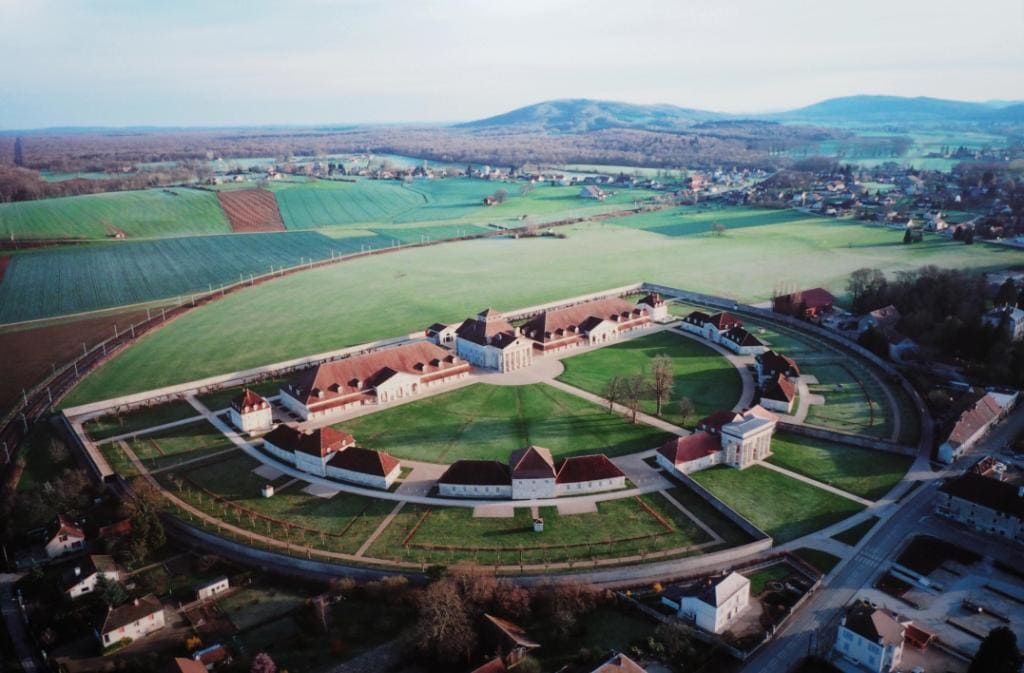
This is an unusual industrial site, which has been protected by a World Heritage Listing since 1982. Led by the ideals of the Enlightenment movement, Ledoux created an innovative and ambitious plan, with little consideration of traditional industrial design or building costs.
The original concept was for a full circle of structures, with the production line forming a central axis. Due to cost, only half the circle was completed, but this clearly shows the scale and geometric arrangement of the potential layout.
The Saline Royale of Arc-et-Senans made a perfect stop-over on our road trip through the east of France halfway between Lyon and Colmar (Alsace). From Juergen of Dare2Go.
French Food Culture: The Ultimate Guide
Ria de Aveiro, Portugal
Aveiro in Central Portugal used to produce most of the country’s salt, with enough to spare for exports. These days, salt production in Aveiro is very much an artisanal affair, with a strong focus on flor de sal crystals.
The many lagoons in the Ria de Aveiro are home to a small number of functioning salt pans and you can see the white pyramids of salt from the roadside or one of the city’s canals. There’s an educational trail at the Ecomuseu Marinha da Troncalhada but to really learn all about salt production in Aveiro, the best thing to do is take a guided tour.

On a tour of the Cale de Oiro Salinas, you’ll learn how the shallow pools of salt water are arranged to control the flow of seawater. The system enables impurities to be filtered out naturally so that the salt master, called a Marnoto, uses his skill to cultivate and harvest the salt crystals. You may be surprised to discover just how greasy the thin film of flor de sal (salt flower) crystals feels in the water.
The mud in salt pans is laden with minerals so this enterprising producer has turned one of the salt pans into a seasonal outdoor spa. For a few euros, you can plaster yourself with handfuls of clay-like mud, let it bake dry in the sun then float in the salt water to rinse it all off. Your skin will feel incredibly soft by the end of it, although your bathing suit won’t look so great!
It’s also possible to enjoy a relaxing massage overlooking the salt pans with products made from salt crystals if you don’t fancy getting muddy.
Allow an hour for a tour, another for the mud bath and 30-60 minutes for a massage. Written by Julie of Julie Dawn Fox In Portugal.
Guérande salt, France
The Guérande peninsula in Brittany France and its salt harvesting date back to the iron age. The first salt flats using lagoons began in the 3rd century shortly after the Roman Conquest.
In the Guérande salt marshes, salt production is a 100% natural process. Designed with a series of tanks that promote the evaporation of water the salt contained within seawater becomes concentrated and crystallizes when it becomes harvestable.

In France the salt workers are called paludiers, coming from the Latin word “palus” for marsh). The salt harvest takes place in the summer, but the salt workers take care of the salt marshes throughout the year. In spring, they empty the salt pans where rainwater has accumulated and remove the mud and algae. In autumn, salt must be protected from high tides and from future frosts, while winter is spent renewing the marshes.

Guérande fleur de sel is recognizable by its grey crystals and its delicate almost violet scent. Fleur de sel is not meant to be cooked with but used as a garnish and is renowned for the flavour it brings to salted caramel dishes. Written by Faith of XYUandBEYOND.
Food in Brittany: Fall in love with the food of Bretagne
Zipaquirá, Colombia
When Spanish conquistadors came to Latin America seeking gold, they went to the capital city of Bogotá. What they found, instead, was “white gold,” even more valuable to the local people.
One of the largest salt mines in the area is located in the charming small city of Zipaquirá, an hour from Bogotá. The miners created a large underground salt cathedral from the massive mined tunnels of rock salt remaining after the excavation.
This Roman Catholic church is a pilgrimage site with three main sections representing the birth, life, and death of Jesus. There are 15 stations of the cross, each lovingly carved telling the story of His life. The coloured lights cast a beautiful glow on this peaceful and inspiring place. Purchase the audio guide for the story of how this impressive cathedral came to be.

Visit the Salt Cathedral Lake, a large pond filled with highly-salinated water. It’s so clear you can see to the depths below—and it’s incredibly deep. You can see coins on the surface of the water where people tossed them to see if they would float. They do—and please don’t toss a coin but appreciate those that are floating there.
It takes around 2 hours to explore (with the audio guide). If you’re interested in learning more about salt mining, you can visit the Brine Museum. There’s also a lovely area outside the mine that pays homage to the miners as well as an overlook for fantastic city views of Zipaquirá.

Zipaquirá is the most popular day trip from Bogotá and it’s easy to get to. There are many small group tours you can take, or you can get there by bus, train, or car. Check out the historic centre of Zipaquirá before you leave. It’s a fun day trip you won’t forget. Written by Sam from My Flying Leap
Tainan Salt Fields, Taiwan
Few people are aware that the subtropical island nation of Taiwan once had a thriving salt industry. The first salt fields were developed on the country’s southwest coast in the 1600s. There, coastal lagoons protected the salt fields from the sea, while year-round sunshine helped with evaporation. The salt fields gradually closed in the early 2000s due to a flood of cheap imported salt, but a few interesting relics remain and make for fascinating visits.
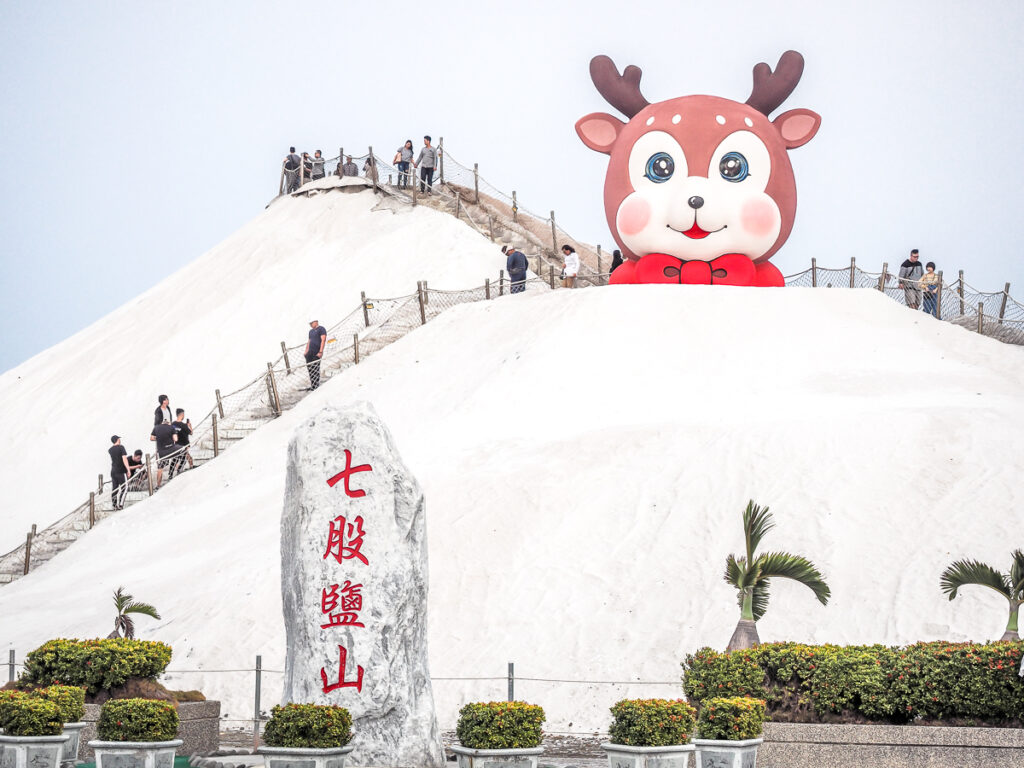
The most famous of these is the 20-meter Cigu Salt Mountain, a hardened salt stockpile at what was once the country’s largest salt field. Visitors can now climb several staircases to the top of the salt mountain, while a variety of salty snacks, drinks, and desserts are sold on-site.
Nearby, the Cigu Salt Museum explores the area’s salt mining culture and history. A short drive away at Jingzijiao Salt Fields, a section of 200-year-old salt fields is preserved. Visitors can take off their shoes and walk on the salt or dip their feet into pools of brine, feeling the texture on their toes. The salt fields are especially photogenic at dusk when the mounds of salt reflect on the pools of brine.

These sights are very much off-the-beaten-path in Taiwan, and visiting them provides a window into a unique and little-known aspect of the country’s past. To learn more about how to visit them, please see my guide to Cigu SaltMountain and the Tainan Salt Fields. By Nick Kembel of Spiritual Travels
Las Coloradas – Mexico
With its unusual bright pink colour, Las Coloradas is one of the Instagrammers favourite places in Mexico for the natural pinky backdrop they offer. I promise you, depending on the light and time of the day, that intense pink is for real. The scene is spectacular and it’s indeed worth a visit, especially if you are on a road trip around Yucatan and you want to squeeze in all the top places in the area.
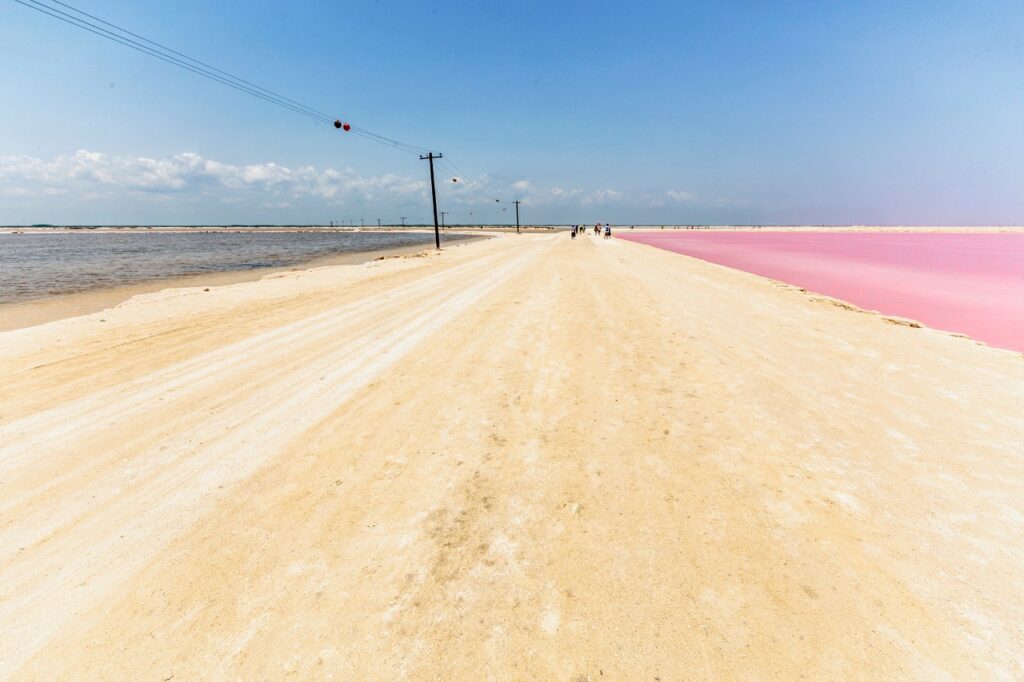
Las Coloradas is located by the Yucatan coast in a natural reserve between Rio Lagartos and the less-known beach resort of el Cuyo, a hidden gem discovered by kitesurfers and loved by anyone in search of a tranquil beach far from the hustle and bustle of the Riviera Maya. You can actually do a tour from El Cuyo to Las Coloradas by quads on a dirt road that stretches along the beach.
Very few people know, though, that Las Coloradas is not only a pretty place to photograph, but it’s a real salt flat where salt is produced, and even one of the most important in Mexico, besides being a great source of income for the locals.
A visionary Mexican family saw the business potential of sea salt production in 1940 and since then the company has been growing and adapting to the changes it’s now not only thriving but also working with local communities to create awareness of environmental-friendly practices.
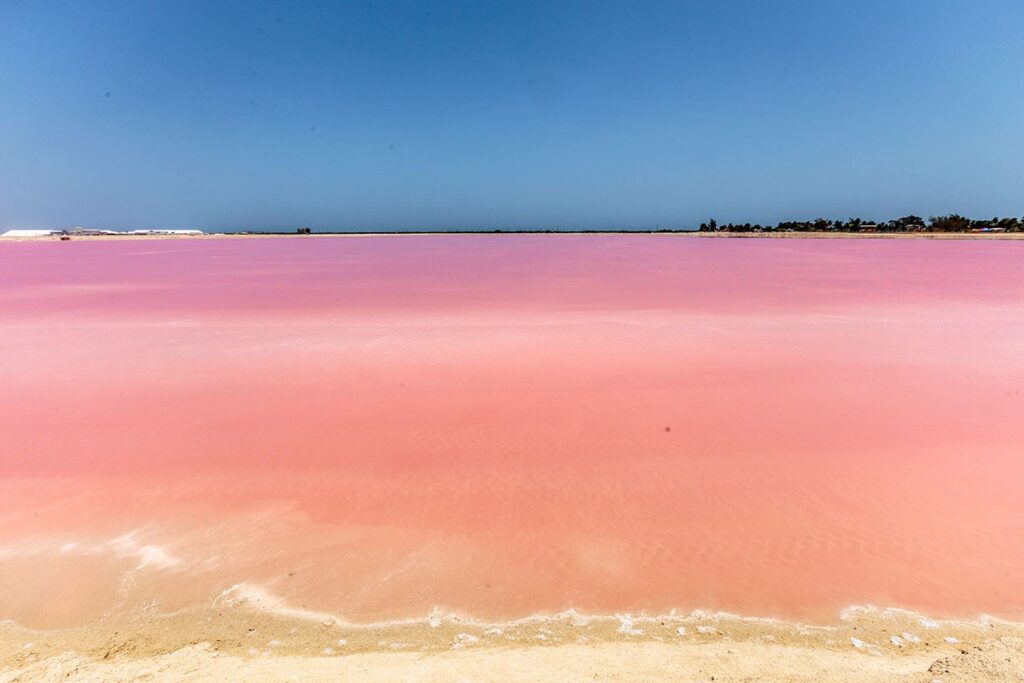
It appears that the salt industry goes back to the Mayan times when this area was called Emal and was also dedicated to sea salt harvesting. Now you might be wondering where the pink colour comes from. It is due to the “artemia salina” a microorganism species that feed on particles floating in those waters, and so leaving the salt ponds “clean” and pinky! Written by Isabella of letstraveltoMexico.
Rann of Kutich Salt Desert India
India is not just about visiting Monuments, the Taj Mahal or Rishikesh. India has so many destinations to visit and your one life is not enough for it!! Rann of Kutch or the Salt Desert of India is very famous for a festival called ‘Ran Utsav’. It is located in the westernmost part of India in Gujarat State and bordering Pakistan.
The region is mainly divided into two: Great Rann and Little Rann. “Rann” means Desert and the great Rann is bigger and known as one of the largest Salt Flats in the world. The Salt The Desert of Kutch is spread over a 30,000 sq km area and the region remains dry for most of the part of the year.
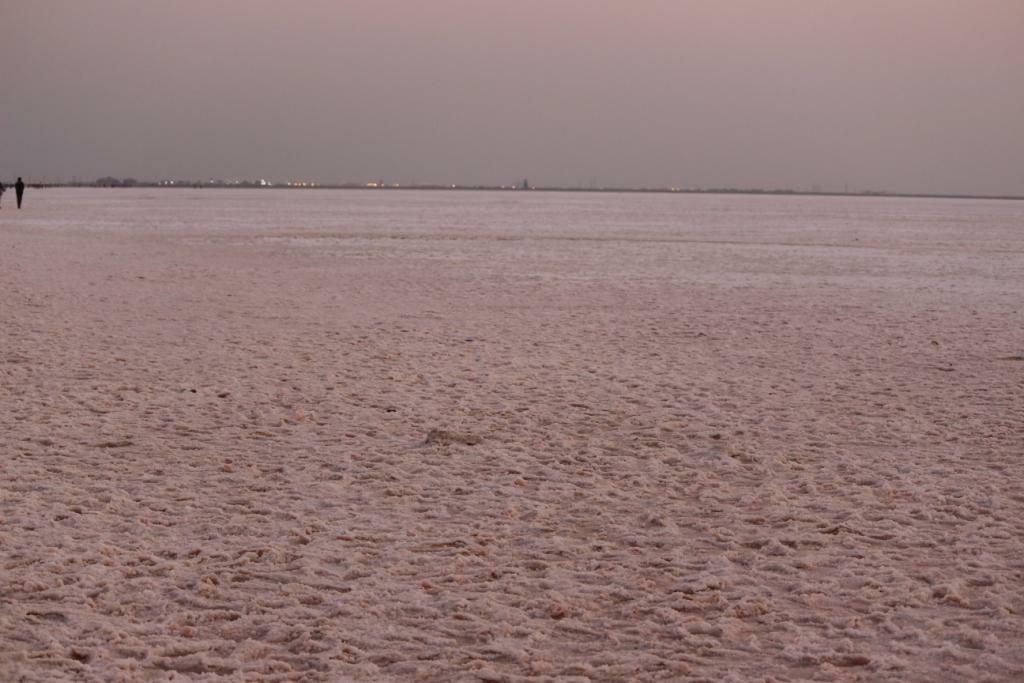
During the Monsoon, the seawater fills the area and during the winter as water evaporates, makes white Salt flats. The Great Rann of Kutch is famous for its vast salt flats and its winter annual Rann Utsav festival whereas Little Rann of Kutch is more about Salt farming.
Winter months from Dec-March is a good time to visit Rann of Kutchh as in summer it’s very tough to survive the desert heat. You can visit the Kutch as a day trip from Bhuj or else you can stay at Kutchi Bhunga(Mud Homestays) with great hospitality in this region. Kutch is known as the new fashion capital of India and Kutchi handicrafts and arts are famous all over the world.
You can visit Nirona village famous for its Rogan art, Ajrakhpur for its Ajrakh prints and Bhujodi, etc. Here you can see the artisans at work while they are making handicrafts of Kutch. Also, you can stop at Kalo Dungar on the way for the views of the Salt Desert. While you visit Ran of Kutch, don’t miss spectacular Sunsets and Full Moon Nights which add the beauty of the white desert by adding different shades of colours. Written by Mayuri Patel of Fernwehrahee
Salt Mining Ukraine Kinburn National Park
Hidden at Ukrainian Kinburn National Park, a unique location hugely under the radar not only among international travellers but also among the locals, is a small but impressive salt mining production.
Back in the USSR days, these artificial salt lakes became known as the ones producing some of the finest, as well as cheapest salt in Europe. Salt harvested at Kinburn still remains in high demand. Plus, a trip to the location is a truly memorable adventure.
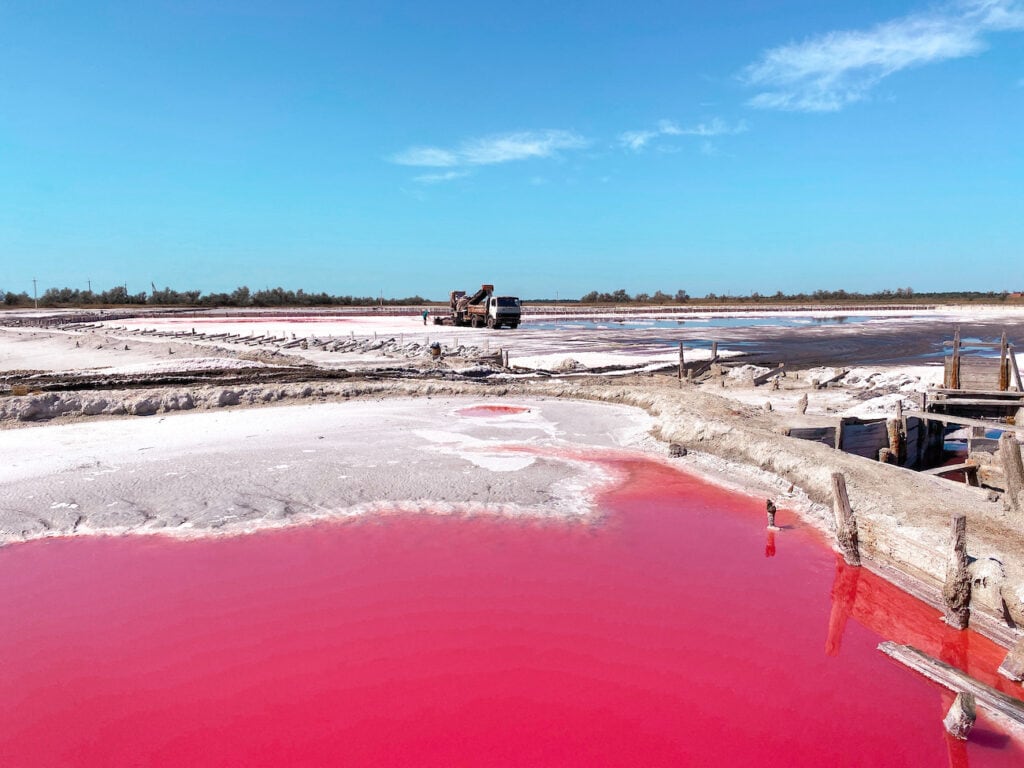
Kinburn National Park is a piece of sandy land almost detached from mainland Ukraine by the waters of the Black Sea. To get to the park, a traveller should use a speedboat that parts from Mykolaiv at least twice a day. It takes about 2 hours to cross the waters of the bay and to get to Kinburn. From the pier, it is a 1-hour journey to the salt lakes.
This is a slow ride on an old Soviet bus with huge wheels – the only type of transport that is able to drive through the sands of Kinburn as there are no asphalted roads. The area is under protection from the Ukrainian Ecological Society and deserves at least two days to be explored. In addition to salt production, it has orchid fields, pink pelicans safari, and camping under the stars.
The lakes are a group of 6 to 7 small pools with bright pink waters and white diamonds of salt. Throughout the summer months, the salt crystallizes under the sun. September is the harvesting season.
A few heavy KAMAZ trucks – old machinery from back in the day – collect the salt and form it into huge pyramids. These are of a gentle pink colour as the salt retains its pigment for a few more weeks after it’s been harvested until it dries out under the sun. Every traveller can grab some salt from the pyramids for free. Explored by Inessa and Natalie, Through a Travel Lens
Salar de Uyuni, Bolivia
By far the world’s “saltiest” location, the Salar de Uyuni in southwest Bolivia’s high plains is the world’s largest salt flat. While visually stunning at any time of year for its seemingly endless expanse of pure white salt, it is particularly stunning during the rainy season, when the salt is covered with water, creating an endless mirror effect with the reflection of the sky.
Visitors should plan for at least one day to visit the Salar de Uyuni, and with its remote location, most should account for spending a night near the salt flats as well. Flights service the small airport in Uyuni from La Paz and other nearby cities, and long-haul buses connect Uyuni to La Pazas well as San Pedro de Atacama in Chile and cities in northern Argentina.
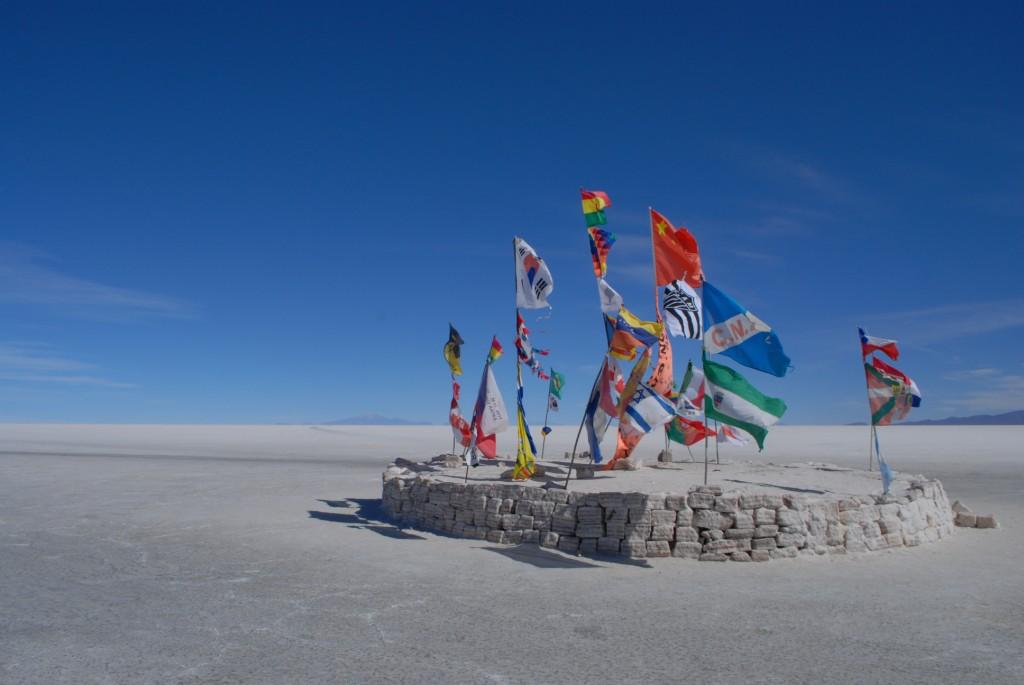
Spending a night on the salt flats will also give you the incredible experience of staying in one of the incredible salt hotels on the salt flats – these hotels are built entirely with blocks of salt. Everything, even bed frames and floors, are made of salt, making for an unforgettable accommodation.
While visiting the Salar de Uyuni is incredible, the salt flats themselves make up just one sliver of this windswept and stunning high plains region in Bolivia. To fully enjoy both the salt flats and the surrounding area, book a three-day or four-day jeep tour with a local guide.
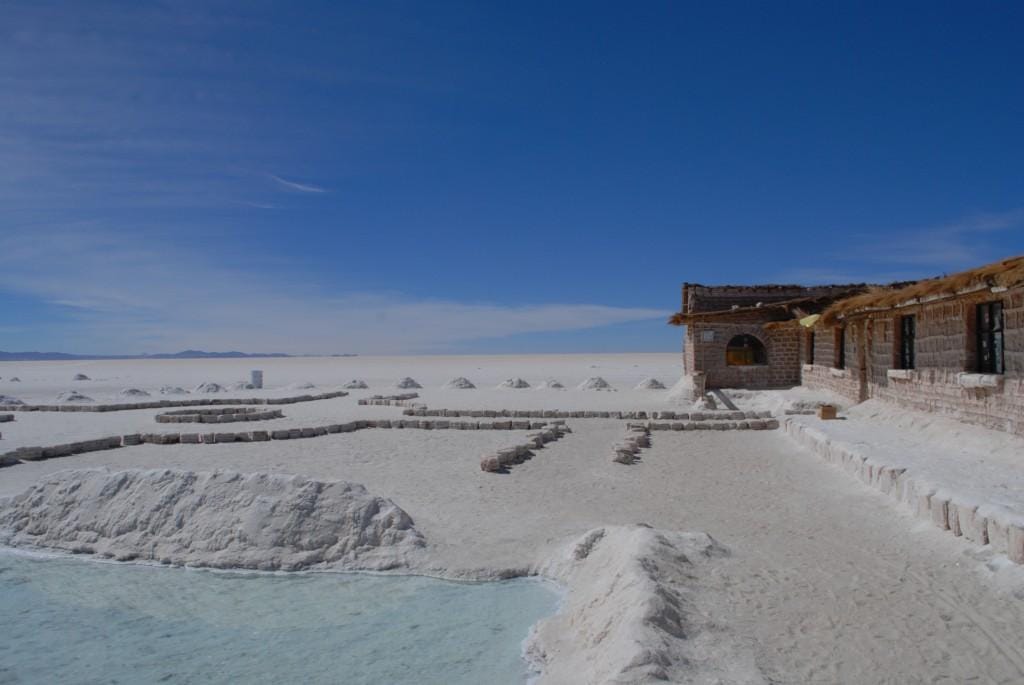
The best Salar de Uyuni tour itinerary leaves from the small town of Tupiza near the border of Argentina. You’ll be able to spend the most time enjoying the salt flats, including an unforgettable morning sunrise, and visit striking red and green lagoons and dormant volcanoes nearby. Carley Rojas Avila of Home to Havana
Salt fields in Kampot, Cambodia
Most people associate the riverside town of Kampot, Cambodia with peppercorns. But the area is also home to an artisanal sea salt industry, with crystals cultivated over 12,000 acres of shimmering salt pans.
Kampot’s salt farms use solar evaporation and are tended almost exclusively by hand with basic tools including wooden rakes and woven baskets. The harvest takes place during the dry season (usually January to March) and can yield up to 200,000 tonnes.
There are questions around the commercialisation of the salt industry threatening traditional farming techniques and encroaching on mangrove forests, so if you want to take a packet of Flower of Kampot sea salt home as a souvenir from Cambodia, it’s best to look for an ethical brand that works directly with farmers (such as Atelier Kampot).
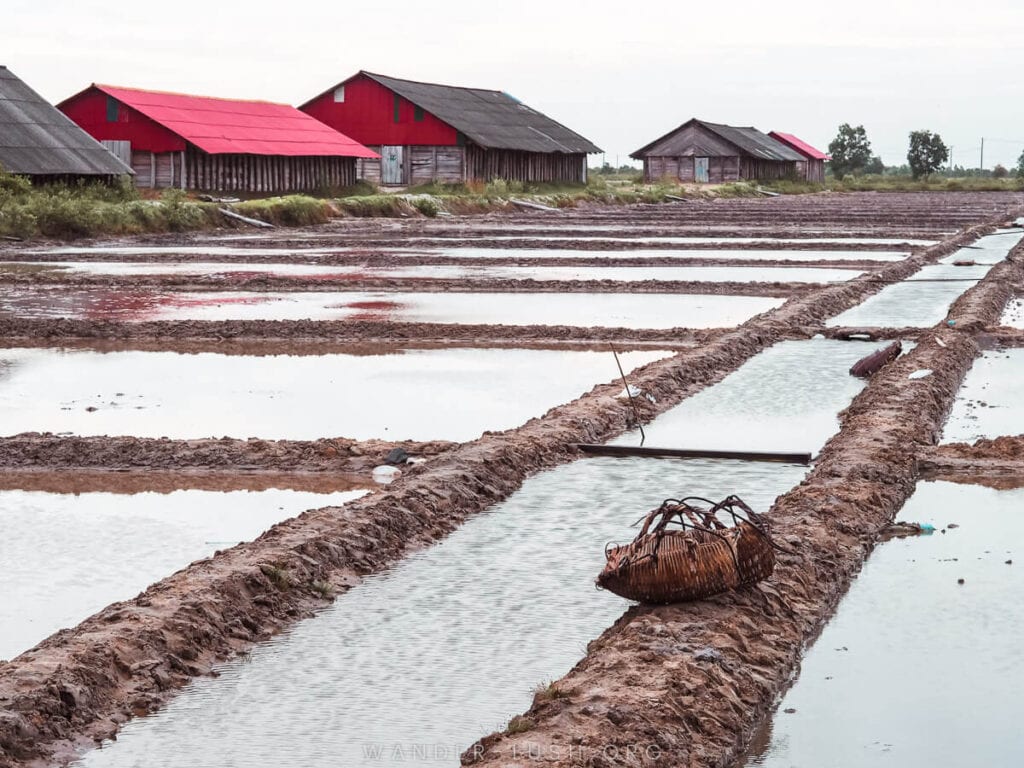
You can taste the salt at restaurants around the city (the Kampot Salted Caramel Milkshake at Café Espresso is my personal favourite) – but seeing the farming process up close is even better. Hire a bicycle to explore the salt pans, which lie on the eastern outskirts of Kampot and in nearby Kep. It’s best to go in the early morning before the heat of the day sets in. A couple of hours is all you need, cycling to and from the salt pans via the ambient riverside. If your timing is right, you’ll see teams of farmers raking the crystals and transporting them to the salt warehouses. By Emily from Wander-Lush.
The Dead Sea, Israel
The Dead sea is one of the most special places on our planet, and one of the most important places to visit in Israel. At -1412 ft (-430m), it is the lowest elevation point on earth, and it is the world’s saltiest body of water. Nine times saltier than the oceans, no plants or animals can flourish here, and that’s the reason for its name.
Even though it is called Sea, it is actually a lake, located in the Jordan Valley, about a 1.5 to 2 hours drive from Jerusalem. It can be a fun day trip, or you can stay here for longer and enjoy more of this special place. The southern shores have many hotels, most of them are spa resorts, with easy access to the beach. All the hotels face the east, which allows the amazing sight of the sunrise behind the red mountains of Jordan from your balcony.
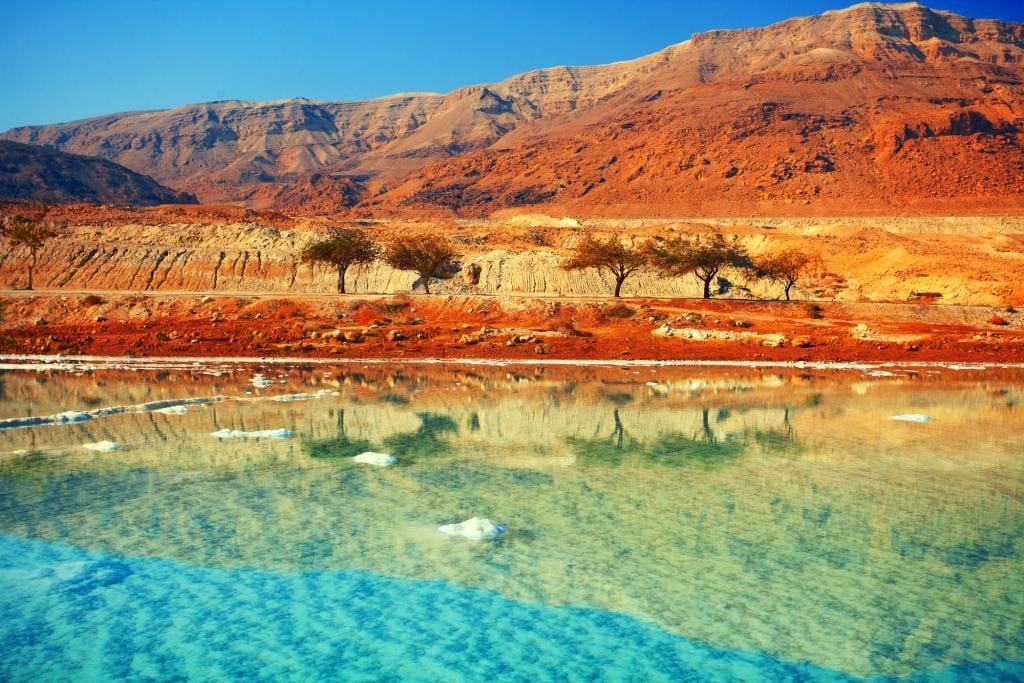
Visitors come from all over the world to float in the water of the Dead Sea and to get spa treatments with the mineral-rich mud that is unique to the area. It is a perfect place for a relaxing vacation, however, the area has more natural and historical sites to explore.
Masada, a UNESCO World Heritage Site, is the most famous one, taking you on a journey 2000 years back, with an interesting story of the Roman-Jew war and Kind Herod. Qumran National Park is another archaeological site, showing a settlement from the 2nd century BCE, where the Dead Sea scrolls were written.
On top of that, you can hike in the mountains of the Judea desert, and enjoy the amazing views of the Dead Sea. You might even get to see beautiful Ibex walking around you. Contributed by Moshe, from The Top Ten Traveler.
San Pedro, Atacama Peru
If you’re looking for a salty destination in South America, head to San Pedro de Atacama in Chile. Set on the arid high plateau of Northern Chile, San Pedro de Atacama is surrounded by dramatic landscapes, including geysers, deserts, hot springs, salt flats, and volcanoes. On top of all that, it’s one of the best places to go stargazing in the world.
There’s a lot of fun things to do in San Pedro de Atacama, so plan to spend at least two full days here. There are many day tours you can join, which will take you to see the biggest salt flats in the area. You may even see local wildlife like the flamingoes and Vicuñas that often walk across the flats along the way.
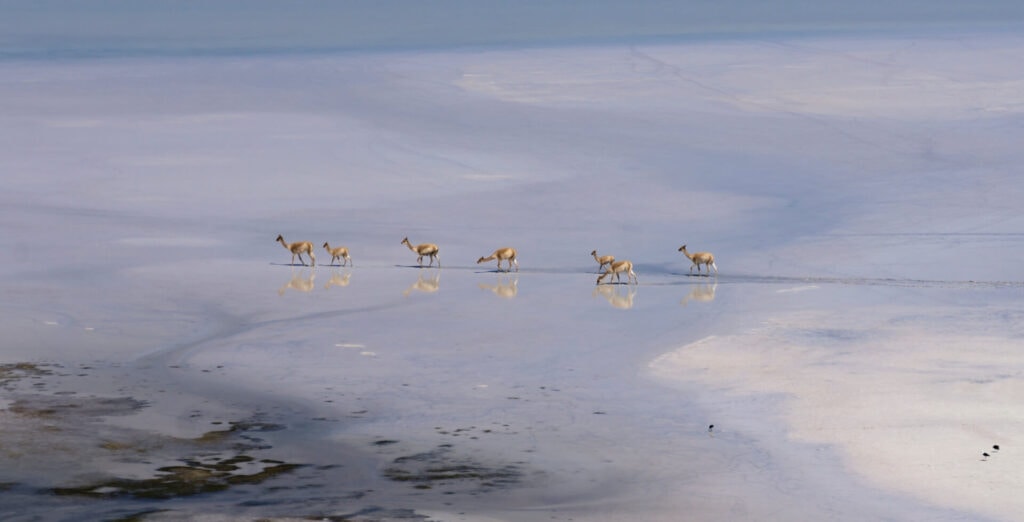
Another fun thing to do here is go swimming in the lagoons. Due to the high salt concentration in the water, you’ll float in them without any effort. It’s such a unique sensation to experience!
San Pedro de Atacama is in Northern Chile near Bolivia’s border, so one of the best ways to get here is to on a 4×4 adventure tour from the Uyuni Bolivia, where you’ll also get to explore the massive salt flats in Bolivia along the way.
Las Salinas de Tenefe, Gran Canaria
Located in the Canary Islands of Spain, Gran Canaria is renowned for its sun, sandy beaches and year-round warm weather. Like most parts of Spain, Gran Canaria boasts an incredible cuisine influenced by locally sourced ingredients. Being an island, salt plays an important part of many dishes from Gran Canaria including the island’s signature dish ropa vieja.
Harvesting salt from the sea on Gran Canaria dates back to the 18th century. In addition to using it in local dishes, salt was harvested and sold to merchants travelling between Africa to Europe. Today, this tradition continues at the Las Salinas de Tenefe. A 40-minute drive south of the capital Las Palmas, Las Salinas de Tenefe is an eye-popping site to see. Prior to the invention of electric pumps, windmill-powered pumps draw seawater into large square earthen holding bins.
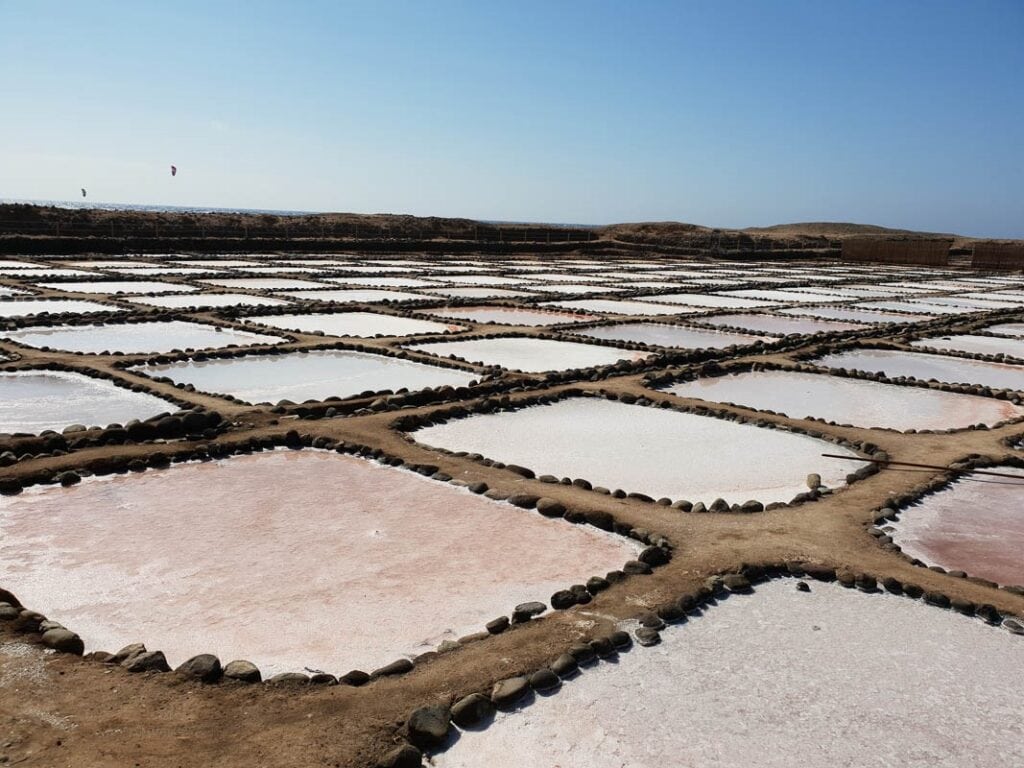
From here time, temperature and most importantly, the sun, transforms seawater into high-quality salt. A perfect afternoon outing, visitors to Las Salinas de Tenefe can learn about the history of harvesting salt from the sea on Gran Canaria. Guests can walk amongst the holding bins, witnessing the different stages of transformation. Also on the site, visitors can explore the “old salt man’s house.” A home/workhouse was once used by the workers.
The house now doubles as an information centre and shop. Best of all, visitors to Las Salinas de Tenefe can sample the different varieties of salt and purchase some to take home. Gran Canaria is a four-house flight from mainland Spain with direct flights from most major Spanish cities. Eric from Food and Drink Destinations
Would you like to experiment with different salts? Here are some ideas for you
Jacobsen’s Salt – The perfect salt-tasting set for at-home culinary adventures. Includes tasting notes with suggested pairings for each salt as well as a branded wooden vial stand – perfect for display on your kitchen counter. Includes Pure Flake Salt, Black Pepper Salt, Black Garlic Salt, Pinot Noir Salt, Habanero Salt, and Rosemary Salt. ; Each vial contains 8-10 grams of salt depending on the flake size.

Have you been on a tour to see Salt being mined, or harvested? What types of salt have you bought and used?
If you are a foodie and love travelling to seek out lots of authentic food experiences here are some more article for you
Armenian food – 45 Armenian dishes you must try
Spanish Food: 40 of the best foods in Spain
Traditional Irish food 25 of the most popular Irish dishes
UNESCO Intangible Cultural Heritage – food
25 Traditional Welsh food dishes
26 Delectable hand pies from around the world
Pin it to save it
